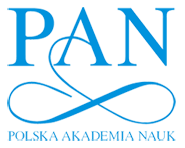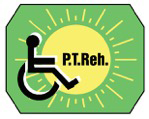


|
Current issue
Archive
Manuscripts accepted
About the journal
Editorial board
Reviewers
Abstracting and indexing
Contact
Instructions for authors
Publication charge
Ethical standards and procedures
Editorial System
Submit your Manuscript
|
1/2021
vol. 35 abstract:
Original paper
Investigation of knee flexor and extensor muscle strength in athletes with and without trunk muscle strength asymmetry
Aydin Balci
1
,
Ezgi Ünüvar
2
,
Bihter Akınoğlu
2, 3
,
Tuğba Kocahan
2
,
Adnan Hasanoğlu
2
1.
Ankara Yıldırım Beyazıt University, Yenimahalle Training and Research Hospital, Sports Medicine Department, Turkey
2.
The Ministry of Youth and Sports, Sports General Directorship, Department of Health Services, Center of Athlete Training and Health Research, Turkey
3.
Department of Physiotherapy and Rehabilitation, Faculty of Health Sciences, Yıldırım Beyazıt University, Ankara, Turkey
Advances in Rehabilitation, 2021, 35(1), 1–8
Online publish date: 2021/01/03
View full text
Get citation
ENW EndNote
BIB JabRef, Mendeley
RIS Papers, Reference Manager, RefWorks, Zotero
AMA
APA
Chicago
Harvard
MLA
Vancouver
Introduction
Lower extremity injuries may be associated with proximal muscle weakness and decreased motor control. Our study aims to examine knee flexor and extensor muscle strength in athletes with and without trunk muscle strength asymmetry. Material and methods This matching control study involved a total of 80 athletes; 40 athletes with asymmetrical trunk muscle strength(asymmetric group) and 40 athletes with symmetrical trunk muscle strength(symmetrical group). Strength measurements of trunk and knee muscles were made with the IsoMed 2000 isokinetic device. Independent Samples T-Test or Mann Whitney-U test was used to compare variables according to their distribution status. The statistical error level was determined as p<0.05. Results In the symmetric group, the isokinetic muscle strength of the trunk flexor muscles was stronger than the asymmetric group (p<0.05) and the trunk extensor muscles were weaker than the asymmetric group (p 0.05). The Limb Symmetry Index(LSI) value of the two groups at 60°/sec was significantly different (p=0.032), and the dominant side in the symmetric group and the non-dominant side in the asymmetric group were stronger than the other side. Conclusions This result may be associated with knee joint injuries which are common in athletes with weak muscle strength, and can be attributed to the literature knowledge that core muscle weakness may increase the frequency of knee injury. Therefore, symmetrical core strengthening training can prevent possible injuries of athletes with asymmetrical trunk muscle strength. However, we think that more studies are needed to reveal this relationship. keywords:
knee, injury, sport, strength ratio |
    |